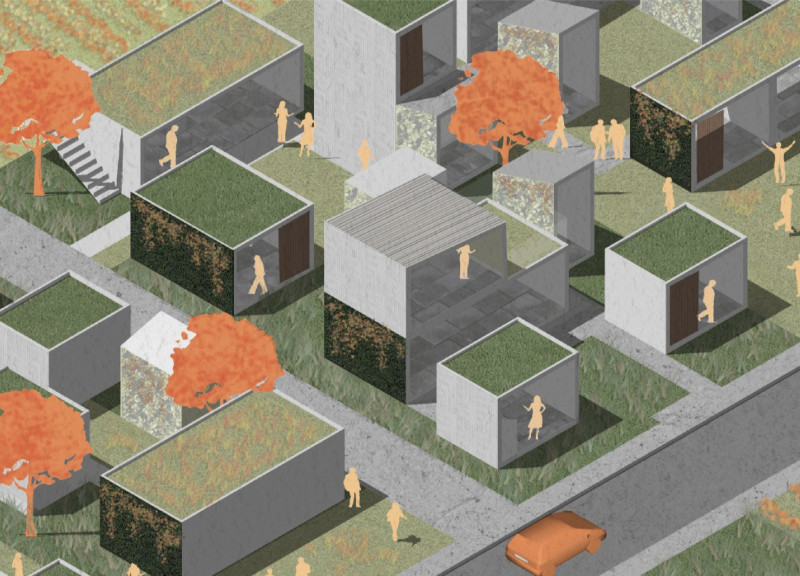5 key facts about this project
At its core, this architectural design is about redefining the relationship between people and their environment. By situating agricultural spaces within proximity to residential units, the project encourages residents to actively participate in food cultivation, promoting a nurturing relationship with the land. This symbiosis not only enhances local ecosystem health but also cultivates a sense of community among residents. In essence, the architecture is a vehicle for social interaction, encouraging shared activities such as gardening, learning, and resource management.
The design features several important components that contribute to its functionality and aesthetic appeal. The modular design of the dwellings allows for flexibility in living arrangements, accommodating varying family sizes and personal preferences. Each unit is strategically oriented to maximize natural light and ventilation, utilizing materials such as wood and fiber cement panels that ensure durability while enhancing the overall aesthetic with a natural finish. Large glass facades break down the barriers between interior and exterior spaces, inviting residents to engage with their surroundings and fostering an atmosphere of openness.
The project embraces a systematic spatial organization that prioritizes accessibility and communal interaction. The housing clusters are arranged in a pattern that not only optimizes land use but also encourages pedestrian movement, allowing residents to easily navigate between their homes, shared gardens, and communal areas. Pathways designed for foot traffic are clearly delineated from roads meant for vehicles, promoting a safe and walkable environment that enhances the quality of life for its inhabitants.
One of the unique approaches in this architectural design is its commitment to sustainability. Integrated water collection systems contribute to responsible resource management, ensuring that residents can maintain their gardens and livelihood without over-reliance on external water supplies. Green roofs are another thoughtful innovation that not only improve insulation but also provide additional space for small-scale agricultural endeavors. This focus on sustainability is a pivotal aspect of the project, demonstrating how architecture can address environmental challenges while creating a viable residential community.
The notion of community living is further reinforced through thoughtfully designed communal spaces. Courtyards and shared gardens serve as focal points where neighbors can come together to collaborate on agricultural projects, share knowledge, and engage in social activities. These areas not only promote relationships among residents but also enhance the overall quality of life by providing inviting spaces for relaxation and community gatherings.
The architectural ideas behind "Thinking Hybrid" symbolize a shift towards more integrated living environments that challenge conventional notions of urban and rural separation. This project stands as an example of how modern architecture can create productive, engaging, and sustainable communities that are increasingly necessary in today's world. It invites occupants to redefine their relationships with their living spaces while embracing modern agricultural practices.
For those interested in gaining a deeper understanding of this innovative architectural project, we encourage further exploration of architectural plans, sections, and designs that illustrate the intricate details and thoughtful considerations embedded within "Thinking Hybrid." The project not only pushes the boundaries of design but also offers practical solutions to contemporary living challenges, making it a noteworthy study in the field of architecture.


























